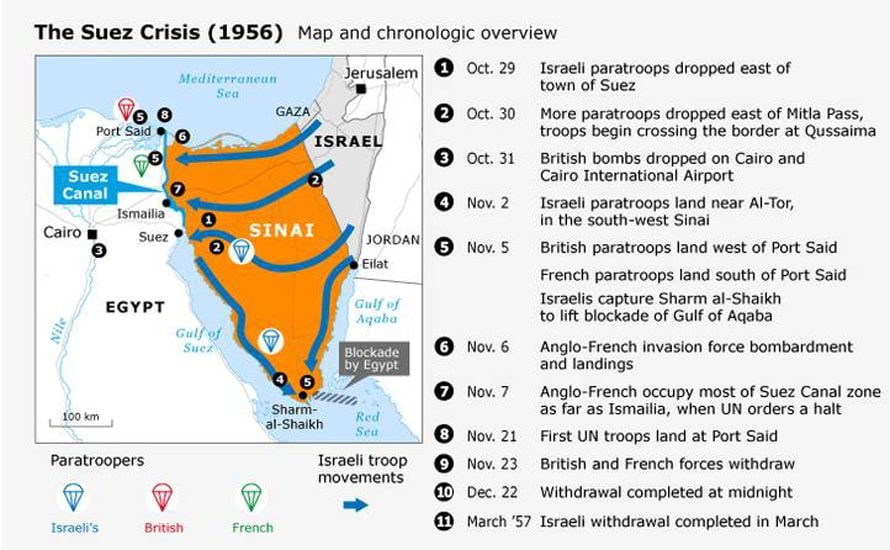
In May 1956, Nasser recognized the People’s Republic of China, angering the United States in the process. As a counteract, on 19 July 1956 Washington decided to withdraw its financial aid for the realization of a large irrigation project in Egypt, the High Dam at Aswan. One week later, on July 26, Nasser announced the nationalization of the Suez Canal Company, owned mainly by British and French investors. The British and French governments, fearing that the freedom of passage through the canal would be endangered, concluded a secret agreement with Israel, known as the Protocol of Sèvres, to attack Egypt and occupy the Canal Zone.
It was decided that Israel would attack the Gaza Strip to neutralize fedayeen and lure the Egyptian army into retaliating. Then, the Israeli army would quickly invade the Sinai, offering an opportunity for the British and French governments to intervene with a ‘peace enforcing’ mission. In the process, the British and French forces would reclaim authority over the Canal.
On October 29, Israeli paratroopers dropped east of Suez at the southern entrance of the waterway. The next day, the Israeli army crossed into the northern part of the desert. The Israeli Air Force could pit the recently acquired French Mystère-fighters against the new MiG-15 in air battles over the Sinai. Israeli air superiority was soon established. On November 5, British and French forces started their intervention with airborne landings near Port Said. On the same day Israeli forces stopped near the Canal Zone and, in the south of the peninsula, occupied Sharm el-Sheikh and lifted the blockade of the Gulf of Aqaba.
The American refusal to support the British-French-Israeli military expedition led to a diplomatic defeat for the countries involved. Israeli troops were forced under pressure from the United Nations and the United States to withdraw from the Sinai and the Gaza Strip. A United Nations Emergency Force (UNEF), the first peacekeeping force in the history of the UN, was placed between the warring sides. The Israeli forces left the Sinai Peninsula and the Gaza Strip in March 1957. UNEF left the Sinai in May/June 1967 at the request of Egypt, shortly before the outbreak of the June War. (See also The Suez Operation of 1956 in Arab-Israeli Wars)

